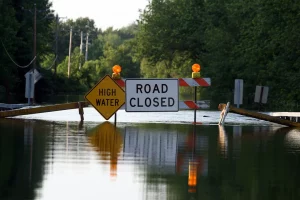Essential for home gym safety, flood zone classifications offer crucial insights for securing your workout space. By grasping these designations, you can create a safe environment that prioritizes longevity and well-being. Proactive measures based on flood zone awareness go beyond equipment placement, safeguarding both your physical space and those using the home gym.
Key Takeaways
- Understanding flood zones aids in selecting a safe home gym location.
- Proper knowledge prevents unexpected property damage due to floods.
- Awareness helps homeowners implement appropriate safety measures.
- Knowing flood zones assists in obtaining necessary insurance coverage.
- Prevent financial losses by considering flood risk levels for home gym safety.
Importance of Flood Zone Awareness
Understanding flood zone classifications is vital for homeowners to assess the level of flood risk their properties face. These classifications, ranging from low to high-risk zones, are critical in determining insurance rates and necessary safety measures.
Risks of Ignoring Zone Classifications
Neglecting flood zone classifications can expose homeowners to significant financial losses and heightened risks of property damage in the event of a flood.
- Unforeseen Damages:
Ignoring flood zone classifications may result in unexpected damages to property.
- Insurance Coverage Issues:
Homeowners might face difficulties in obtaining insurance coverage for flood-related damages.
- Safety Concerns:
Disregarding zone classifications could endanger the safety of individuals residing in flood-prone areas.

Implementing Safety Measures at Home
Homeowners can enhance safety and reduce risks by implementing effective measures within their homes to mitigate the impact of potential flooding. Measures such as installing sump pumps, elevating electrical systems, using water-resistant materials, and sealing basements can help prevent damage.
Additionally, creating an emergency plan, storing valuables in waterproof containers, and obtaining flood insurance are essential steps in preparing for potential flooding incidents.
Choosing the Right Home Gym Location
When establishing a home gym, the decision of where to locate it plays a critical role in creating a safe and effective workout environment.
Consider Space: Provide ample room for equipment and movement.
Ventilation: Select a well-ventilated area to prevent overheating.
Flooring: Go for suitable flooring to prevent slips and absorb impact.
Resources for Understanding Flood Zones
Exploring the intricacies of flood zone classifications can provide homeowners with essential knowledge for safeguarding their properties and making informed decisions regarding home gym safety. Resources such as FEMA’s Flood Map Service Center, local government websites, and professional consultants offer valuable information on flood zones. Understanding these resources can assist homeowners in determining the flood risk level of their property and implementing appropriate safety measures.
Frequently Asked Questions
Can Flood Zone Classifications Change Over Time?
Flood zone classifications can indeed change over time due to various factors such as urban development, climate change, and updated mapping technology. It is essential for property owners to stay informed and regularly check for any updates in their area.
How Do Local Terrain Features Impact Flood Zone Designations?
Local terrain features heavily impact flood zone designations. Topography, soil composition, nearby bodies of water, and development patterns all influence the classification. Understanding these factors is vital for accurate flood risk assessment and effective mitigation strategies.
Are There Specific Building Materials Recommended for Flood-Prone Areas?
In flood-prone areas, it is recommended to use flood-resistant building materials such as concrete, brick, metal, or pressure-treated wood. These materials can withstand water exposure and minimize damage, enhancing the safety and resilience of structures.
What Role Does Insurance Play in Mitigating Flood Risks?
Insurance plays an essential role in mitigating flood risks by providing financial protection in case of property damage or loss due to flooding. It helps homeowners recover and rebuild, ensuring a safety net against unforeseen circumstances.
Is It Possible to Retrofit an Existing Home to Be Flood-Resistant?
Yes, retrofitting an existing home to be flood-resistant is possible. This process involves implementing various measures such as elevating the structure, installing flood barriers, waterproofing walls, and ensuring proper drainage systems to mitigate flood risks effectively.
Conclusion
To sum up, understanding flood zone classifications is vital for maximizing home gym safety. By being aware of the risks associated with different zones, homeowners can make informed decisions about where to locate their gym and implement appropriate safety measures. This knowledge not only protects equipment from potential damage during floods but also contributes to creating a secure workout environment overall. It is imperative for individuals to prioritize flood zone awareness to guarantee the safety and longevity of their home gym.
You May Also Like To Read:







